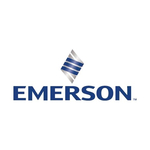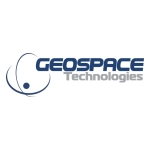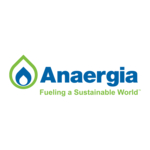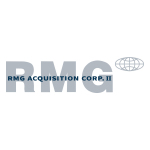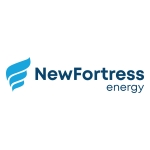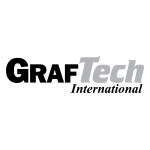SANTA CLARITA, Calif.--(BUSINESS WIRE)--California Resources Corporation (NYSE: CRC), an independent oil and natural gas company committed to energy transition in the sector, today reported second quarter 2021 operational and financial results.
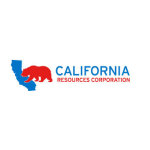
“CRC continued to deliver on its strategy with strong second quarter results driven by robust financial and operational performance, resulting in an increase in 2021 free cash flow1 guidance to $400 to $500 million. Given our financial strength and low stock valuation relative to fundamentals, we are increasing our Share Repurchase Program from $150 million to $250 million," said Mac McFarland, President and Chief Executive Officer. "I am also pleased to announce an acquisition of the 90% working interest in the joint venture wells held by our partner as well as a planned divestiture of our non-core Ventura operations. These strategic A&D transactions will simplify our business model, lower our overall operating costs and provide positive net cash proceeds."
Mr. McFarland continued, "We continued to make strides on our ESG strategy and are pleased to announce we have identified approximately one billion metric tons of CO2 permanent storage capacity as well as up to 1,000 megawatts (MW) of front-of-the-meter solar opportunities which will help contribute to the decarbonization of California. As a first step, we are submitting permits for an ~40 million metric ton permanent storage CCS project, Carbon TerraVault I. Further, we are advancing arrangements with SunPower for an initial 12 MW and up to 45 MW of behind-the-meter solar projects.
"I'm also excited to announce the appointment of Nicole Neeman Brady to our Board and look forward to her contributions, particularly on the Sustainability Committee."
Second Quarter 2021 Highlights
Financial
-
Reported a net loss attributable to common stock of $111 million, or $1.34 per diluted share. Adjusted net income1 was $78 million, or $0.94 per diluted share
-
Generated net cash provided by operating activities of $127 million, adjusted EBITDAX1 of $169 million and free cash flow1 of $77 million
-
Closed the quarter with $151 million of cash on hand, an undrawn credit facility and $518 million of liquidity2
-
Sustained non-energy operating costs and general and administrative (G&A) expense improvements achieved earlier in 2021
Operational
-
Produced an average of 101,000 net barrels of oil equivalent (BOE) per day, including 61,000 barrels per day of oil, with quarterly capital expenditures of $50 million
-
Operated two drilling rigs in the San Joaquin Basin and drilled 21 wells (21 online in 2Q21)
-
Operated 35 maintenance rigs
-
Completed 48 capital workovers
Transactional
-
Signed agreements to divest operations in the Ventura basin for total cash consideration of up to $102 million plus additional earn-out consideration that is linked to future commodity prices
-
Post quarter end, acquired the working interest in the joint venture wells held by Macquarie Infrastructure and Real Assets, Inc. (“MIRA”) for $53 million
-
Post quarter end, filing permits for an ~40 MMT CO2 permanent storage CCS project, Carbon TerraVault I
-
Advancing a 12 MW behind-the-meter solar project with SunPower for CRC's Mt. Poso field which is expected to be Low Carbon Fuel Standard ("LCFS") eligible; construction is expected to begin in early 2022
Guidance
-
Raised 2021 free cash flow1 guidance to $400 to $500 million
-
Optimized CRC investment dollars by shifting an additional $20 million from drilling and completions to downhole maintenance projects which provide efficiencies and faster payouts
-
Raised the Share Repurchase Program ("SRP") to $250 million from $150 million; repurchased 1.4 million shares for $45 million in 2Q21
2021 Guidance & Capital Program
Given the strength of the second quarter results, CRC has raised its full year 2021 free cash flow1 guidance to $400 to $500 million from $250 to $350 million, adjusted EBITDAX1 guidance to $725 to $825 million from $625 to $725 million and production guidance to 97 to 100 MBOE per day from 96 to 99 MBOE per day. Recognizing capital efficiency improvements and faster payouts on downhole maintenance projects, CRC revised its full year 2021 operating cost and capital guidance by shifting an additional $20 million of drilling capital to these opportunities. In addition to this shift from capital to operating costs, an increase in natural gas prices further raises expected operating costs by approximately $35 million, which is more than offset by increased natural gas revenues as CRC is net long natural gas on the whole. These two items result in revised full year 2021 capital guidance of $170 to $190 million from $185 to $210 million and revised full year 2021 operating cost guidance of $670 to $695 million from $615 to $630 million.
CRC made $77 million of capital investments in the first half of 2021. The current capital program anticipates that CRC will maintain a consistent level of investment throughout the remainder of the year. If commodity prices decline significantly from current levels. CRC may need to decrease the size of its capital program in response to market conditions. The Company's capital program will be dynamic in response to oil market volatility while focusing on maintaining its oil production, strong liquidity and maximizing its free cash flow.
|
|
|
|
|
|
|
Prior
|
|
Revised
|
2021E TOTAL YEAR GUIDANCE
|
|
Total Year 2021E
|
|
Total Year 2021E
|
|
|
|
|
|
Total Production (Mboe/d)
|
|
96 - 99
|
|
97 - 100
|
Oil Production (Mbbl/d)
|
|
60 - 62
|
|
60 - 62
|
Operating Costs ($ millions)
|
|
$615 - $630
|
|
$670 - $695
|
General and administrative expenses ($ millions)
|
|
$180 - $190
|
|
$180 - $190
|
Capital ($ millions)
|
|
$185 - $210
|
|
$170 - $190
|
Adj. EBITDAX1 ($ millions)
|
|
$625 - $725
|
|
$725 - $825
|
Free cash flow1 ($ millions)
|
|
$250 - $350
|
|
$400 - $500
|
Increasing the Share Repurchase Program
In August 2021, CRC's Board of Directors increased the Share Repurchase Program by $100 million to $250 million through March 31, 2022.
Acquisitions and Divestitures
In the second quarter of 2021, CRC entered into agreements to sell its Ventura basin operations for expected cash consideration of up to $102 million plus additional earn-out consideration that is linked to future commodity prices. The consideration includes $82 million of cash to be paid at closing and up to $20 million of potential additional consideration if the buyer does not perform certain abandonment obligations with respect to the divested properties. These transactions will simplify CRC's business model, lower its overall operating costs and decrease its asset retirement obligations. For the three months ending June 30, 2021, CRC's Ventura basin operations were producing 3,600 BOE per day (~65% oil). The closing of the transaction is subject to customary closing conditions, including satisfaction of land and environmental due diligence and third-party consents.
In August 2021, CRC continued to demonstrate its focus on core areas by acquiring the 90% working interest in the joint venture wells held by MIRA for $53 million, before transaction costs. The acquisition of MIRA’s working interest would have added oil production of 1,600 BOE per day (~100% oil) for the first half of 2021 with minimal integration costs and underground risk.
CRC’s full year guidance will be updated upon the closing of the Ventura basin transactions which are expected in the second half of 2021.
Sustainability Update
According to internal and third party estimates, CRC has some of the lowest carbon intensity production in the U.S. CRC aims to build upon this position through investment in decarbonization projects and other emissions reducing projects to help advance energy transition in California. As part of an initial review, CRC has the potential to permanently store up to 1 billion metric tons of CO2 in its oil and gas reservoirs as well as the opportunity to generate 300 to 1,000 MW of front-of-the-meter solar power for the grid by utilizing CRC's vast surface land footprint. In addition to these opportunities, CRC has the potential for up to 45 MW of behind-the-meter solar development projects with its partner SunPower.
Building on CRC's carbon capture opportunity, CRC is applying for Class VI EPA permits for a project with a capability of up to 40 million metric tons of permanent CO2 storage, referred to as Carbon TerraVault I. Injection for this project could begin in the 2025 time frame with the injection of approximately 1 million metric tons per year, equivalent to the annual emissions of approximately 200,000 passenger vehicles. CRC is proud to be a first mover of CCS operations in California and to help the state make progress on its carbon neutrality goals.
CRC has a dedicated Sustainability Committee chaired by William B. Roby, with members Nicole Neeman Brady and Andrew B. Bremner along with a dedicated corporate function under the executive leadership of Chris Gould as EVP and Chief Sustainability Officer.
Board Enhancement
On August 5, 2021, CRC's Board of Directors elected one new Board member, Nicole Neeman Brady.
Ms. Neeman Brady has over 20 years of experience as an entrepreneur, executive, investor and community leader with global water, energy, and agricultural expertise. She serves as the Chief Executive Officer and a director of Sustainable Development Acquisition Corp. since December 2020. She also served as Principal and Chief Operating Officer at Renewable Resources Group LLC, as well as a member of the Investment Committee and a board member of several of its portfolio companies. Her experience also includes a deep understanding of and passion for the public sector, including board service on the Colorado River Board of California and currently, as a Commissioner on the Los Angeles Department of Water and Power, a Board member of Blue Ocean Mariculture and a Board member of the Library Foundation of Los Angeles. Please see www.crc.com for more details.
Fresh Start Accounting and Predecessor and Successor Periods
CRC qualified and adopted fresh start accounting upon emergence from bankruptcy on October 27, 2020, at which point CRC became a new entity for financial reporting purposes. CRC adopted an accounting convenience date of October 31, 2020 for the application of fresh start accounting. As a result of the application of fresh start accounting and the effects of the implementation of the joint plan of reorganization, the financial statements after October 31, 2020 may not be comparable to the financial statements prior to that date. Accordingly, “black-line” financial statements are presented to distinguish between the Predecessor and Successor companies. References to "Predecessor” refer to the Company for periods ended on or prior to October 31, 2020 and references to “Successor” refer to the Company for periods subsequent to October 31, 2020.
Second Quarter 2021 Results
|
|
Successor
|
|
|
Predecessor
|
|
|
2nd Quarter
|
|
|
2nd Quarter
|
($ and shares in millions, except per share amounts)
|
|
2021
|
|
|
2020
|
|
|
|
|
|
|
Statements of Operations:
|
|
|
|
|
|
Revenues
|
|
|
|
|
|
Total revenues
|
|
$
|
304
|
|
|
|
$
|
276
|
|
|
|
|
|
|
|
Costs
|
|
|
|
|
|
Total costs
|
|
394
|
|
|
|
391
|
|
Operating Loss
|
|
$
|
(90
|
)
|
|
|
$
|
(115
|
)
|
Net Loss Attributable to Common Stock
|
|
$
|
(111
|
)
|
|
|
$
|
(271
|
)
|
|
|
|
|
|
|
Net loss attributable to common stock per share - basic and diluted
|
|
$
|
(1.34
|
)
|
|
|
$
|
(5.47
|
)
|
Adjusted net income (loss)
|
|
$
|
78
|
|
|
|
$
|
(202
|
)
|
Adjusted net income (loss) per share - basic
|
|
$
|
0.94
|
|
|
|
$
|
(4.08
|
)
|
Weighted-average common shares outstanding - basic
|
|
83.1
|
|
|
|
49.5
|
|
Adjusted EBITDAX
|
|
$
|
169
|
|
|
|
$
|
19
|
|
|
|
Successor
|
|
|
Predecessor
|
|
|
2nd Quarter
|
|
|
2nd Quarter
|
($ in millions)
|
|
2021
|
|
|
2020
|
Cash Flow Data:
|
|
|
|
|
|
Net cash provided by operating activities
|
|
$
|
127
|
|
|
|
$
|
(135
|
)
|
Net cash used in investing activities
|
|
$
|
(43
|
)
|
|
|
$
|
(15
|
)
|
Net cash (used in) provided by financing activities
|
|
$
|
(63
|
)
|
|
|
$
|
199
|
|
Six-Month 2021 Results
|
|
Successor
|
|
|
Predecessor
|
|
|
Six Months
|
|
|
Six Months
|
($ and shares in millions, except per share amounts)
|
|
2021
|
|
|
2020
|
|
|
|
|
|
|
Statements of Operations:
|
|
|
|
|
|
Revenues
|
|
|
|
|
|
Total revenues
|
|
$
|
667
|
|
|
|
$
|
849
|
|
|
|
|
|
|
|
Costs
|
|
|
|
|
|
Total costs
|
|
830
|
|
|
|
2,613
|
|
Operating Loss
|
|
$
|
(163
|
)
|
|
|
$
|
(1,764
|
)
|
Net Loss Attributable to Common Stock
|
|
$
|
(205
|
)
|
|
|
$
|
(2,067
|
)
|
|
|
|
|
|
|
Net loss attributable to common stock per share - basic and diluted
|
|
$
|
(2.46
|
)
|
|
|
$
|
(41.84
|
)
|
Adjusted net income (loss)
|
|
$
|
180
|
|
|
|
$
|
(210
|
)
|
Adjusted net income (loss) per share - basic
|
|
$
|
2.16
|
|
|
|
$
|
(4.25
|
)
|
Weighted-average common shares outstanding - basic
|
|
83.2
|
|
|
|
49.4
|
|
Adjusted EBITDAX
|
|
$
|
358
|
|
|
|
$
|
270
|
|
|
|
Successor
|
|
|
Predecessor
|
|
|
Six Months
|
|
|
Six Months
|
($ in millions)
|
|
2021
|
|
|
2020
|
Cash Flow Data:
|
|
|
|
|
|
Net cash provided by operating activities
|
|
$
|
274
|
|
|
|
$
|
93
|
|
Net cash used by investing activities
|
|
$
|
(63
|
)
|
|
|
$
|
(27
|
)
|
Net cash (used) provided by financing activities
|
|
$
|
(88
|
)
|
|
|
$
|
43
|
|
Review of Operating and Financial Results
Total daily net production volumes decreased 10% from 112,000 BOE per day for the second quarter of 2020 to 101,000 BOE per day for the second quarter of 2021. The decrease from the same period in 2020 was primarily due to limited drilling activity and capital investment during the prior twelve months and natural decline rates. Total daily net production volumes decreased 15% from 117,000 BOE per day for the six months ended June 30, 2020 to 100,000 BOE per day for the same period in 2021. Production sharing type contracts (PSC-type) at CRC's Long Beach assets negatively impacted oil production by approximately 5,000 and 4,000 barrels per day in the three and six months ended June 30, 2021, respectively, compared to the same prior-year period. See Attachment 3 for further information on production.
Realized oil prices, including the effect of settled hedges, increased by $23.28 per barrel from $30.82 per barrel in the second quarter of 2020 to $54.10 per barrel in the second quarter of 2021. For the six months ended June 30, 2021, realized oil prices, including the effect of settled hedges, increased by $10.15 to $53.91 from $43.76 in the same period of 2020. Realized oil prices were higher in the second quarter of 2021 compared to the same prior-year period as oil demand recovered from its COVID-19 driven lows. See Attachment 4 for further information on prices.
Adjusted EBITDAX1 for the second quarter of 2021 was $169 million and net cash provided by operating activities was $127 million. Internally funded capital invested during the second quarter of 2021 was $50 million. Free cash flow1 was $77 million. Adjusted EBITDAX1 for the six months ended June 30, 2021 was $358 million and net cash provided by operating activities was $274 million. For the first half of 2021, internally funded capital invested was $77 million. Free cash flow1 was $197 million.
FREE CASH FLOW
|
|
|
|
|
|
|
|
|
|
|
|
|
Management uses free cash flow, which is defined by us as net cash provided by operating activities less capital investments, as a measure of liquidity. The following table presents a reconciliation of our net cash provided by operating activities to free cash flow. We have excluded one-time costs for bankruptcy related fees during 2021 and 2020 as a supplemental measure of free cash flow.
|
|
|
|
|
|
|
|
|
|
|
|
|
|
|
Successor
|
|
|
Predecessor
|
|
|
Successor
|
|
|
Predecessor
|
|
|
2nd Quarter
|
|
|
2nd Quarter
|
|
|
Six Months
|
|
|
Six Months
|
($ millions)
|
|
2021
|
|
|
2020
|
|
|
2021
|
|
|
2020
|
|
|
|
|
|
|
|
|
|
|
|
|
Net cash provided by operating activities
|
|
$
|
127
|
|
|
|
$
|
(135
|
)
|
|
|
$
|
274
|
|
|
|
$
|
93
|
|
Capital investments
|
|
(50
|
)
|
|
|
(3
|
)
|
|
|
(77
|
)
|
|
|
(33
|
)
|
Free cash flow
|
|
77
|
|
|
|
(138
|
)
|
|
|
197
|
|
|
|
60
|
|
One-time bankruptcy related fees
|
|
2
|
|
|
|
42
|
|
|
|
4
|
|
|
|
47
|
|
Free cash flow, after special items
|
|
$
|
79
|
|
|
|
$
|
(96
|
)
|
|
|
$
|
201
|
|
|
|
$
|
107
|
|
Operating costs for the second quarter of 2021 were $169 million compared to $127 million for the second quarter of 2020. Operating costs for the six months ended June 30, 2021 were $333 million compared to $319 million for the same period in 2020. The increase was primarily attributable to higher downhole maintenance activity in 2021 which was deferred in 2020 as CRC shut-in wells. Additionally, operating costs increased in 2021 due to higher energy costs and natural gas prices as compared to 2020. Partially offsetting these increases were lower compensation-related costs from streamlining CRC's operations, which included headcount reductions in late 2020 and early 2021. CRC's second quarter 2020 reflect cost savings for reduced work hours and reduced management salaries in response to the industry downturn and the COVID-19 pandemic. Although higher natural gas and electricity prices in 2021 increased CRC's operating costs, higher prices have a net positive effect on operating results due to higher revenue from sales of these commodities which CRC also produces.
Operating costs per BOE are presented below:
OPERATING COSTS PER BOE
|
|
|
|
|
|
|
|
|
|
|
|
|
The reporting of our PSC-type contracts creates a difference between reported operating costs, which are for the full field, and reported volumes, which are only our net share, inflating the per barrel operating costs. The following table presents operating costs after adjusting for the excess costs attributable to PSC-type contracts.
|
|
|
|
|
|
|
|
|
|
|
|
|
|
|
Successor
|
|
|
Predecessor
|
|
|
Successor
|
|
|
Predecessor
|
|
|
2nd Quarter
|
|
|
2nd Quarter
|
|
|
Six Months
|
|
|
Six Months
|
($ per Boe)
|
|
2021
|
|
|
2020
|
|
|
2021
|
|
|
2020
|
Energy operating costs (a)
|
|
$
|
4.70
|
|
|
|
$
|
3.51
|
|
|
|
$
|
4.70
|
|
|
|
$
|
3.61
|
|
Gas processing costs
|
|
0.66
|
|
|
|
0.46
|
|
|
|
0.60
|
|
|
|
$
|
0.57
|
|
Non-energy operating costs (b)
|
|
13.12
|
|
|
|
8.45
|
|
|
|
13.10
|
|
|
|
10.81
|
|
Operating costs
|
|
$
|
18.48
|
|
|
|
$
|
12.42
|
|
|
|
$
|
18.40
|
|
|
|
$
|
14.99
|
|
Excess costs attributable to PSC-type contracts
|
|
(1.73
|
)
|
|
|
(0.42
|
)
|
|
|
(1.66
|
)
|
|
|
(0.66
|
)
|
Operating costs, excluding effects of PSC-type contracts
|
|
$
|
16.75
|
|
|
|
$
|
12.00
|
|
|
|
$
|
16.74
|
|
|
|
$
|
14.33
|
|
(a) Energy operating costs include purchases of fuel gas used to generate electricity, purchased electricity and internal costs to produce electricity used in our operations.
|
(b) Non-energy operating costs equal total operating costs less energy operating costs and gas processing costs. Purchases of fuel gas to generate steam which is then used in our steamfloods is included in non-energy operating costs.
|
G&A expenses were $48 million for the second quarter of 2021, compared to $69 million in the same prior-year period. For the six months ended June 30, 2021, G&A expenses were $96 million compared to $129 million in the same prior-year period. The decrease in G&A expenses reflects lower compensation-related costs primarily due to workforce reductions that occurred in the second half of 2020 and the first quarter of 2021 as well as benefit reductions in the second quarter of 2021. CRC's second quarter 2020 results include savings from reduced work hours and reduced management salaries in response to the industry downturn and the COVID-19 pandemic. The remaining decrease between comparative periods was primarily due to cost saving efforts which resulted in lower spend across a number of cost categories. The decrease was partially offset by stock-based compensation expense related to awards granted to executives and directors in 2021.
Balance Sheet and Liquidity Update
CRC's aggregate commitment under the Revolving Credit Facility was $492 million as of June 30, 2021. The borrowing base for the Revolving Credit Facility is redetermined around April and October of each year and was most recently set at $1.2 billion in May 2021. The amount CRC is able to borrow under the Revolving Credit Facility is limited to the amount of the commitment described above.
In May 2021, CRC amended its Revolving Credit Facility to provide further strategic flexibility with respect to CRC's minimum and maximum hedging restrictions and to increase CRC's capacity to make certain restricted payments, including paying dividends on its common stock and repurchasing its common stock.
As of June 30, 2021, CRC had liquidity of $518 million, which consisted of $151 million in unrestricted cash and $367 million of available borrowing capacity under its Revolving Credit Facility after accounting for $125 million in outstanding letters of credit.
CRC anticipates the preferred interest in a development joint venture held by Benefit Street Partners ("BSP") could be automatically redeemed in the second half of 2021. We anticipate the remaining distributions to BSP will approximate $20 million.
CRC may begin paying income taxes in early 2022 if Brent prices remain at current levels for a sustained period. CRC's tax paying status depends on a number of factors, including but not limited to, the amount and type of CRC's capital spend, cost structure and activity levels. Potential legislation could also limit tax incentives for fossil fuels.
Operational Update
During the second quarter of 2021, CRC operated an average of two drilling rigs in the San Joaquin Basin, drilled 21 net wells, 19 of which were brought online in addition to the two that were brought online from the first quarter totaling 21 online wells. The San Joaquin basin produced 74,500 net BOE per day. The Los Angeles basin produced 19,200 net BOE per day, the Ventura basin produced 3,600 net BOE per day and the Sacramento basin produced 3,300 net BOE per day.
September 2021 Investor Conferences
CRC's executives will be participating in the Barclays CEO Energy-Power Conference on September 8-10. Mac McFarland, President and CEO, and Francisco Leon, EVP and CFO, will also be presenting on September 10th at 10:55 a.m. ET.
CRC’s presentation materials will be available the day of the event on the Earnings and Presentations page in the Investor Relations section on www.crc.com.
Conference Call Details
To participate in the conference call scheduled for later today at 5:00 p.m. Eastern Time, please dial (877) 328-5505 (International calls please dial +1 (412) 317-5421) or access via webcast at www.crc.com 15 minutes prior to the scheduled start time to register. Participants may also pre-register for the conference call at https://dpregister.com/sreg/10157220/e9185e9690. A digital replay of the conference call will be archived for approximately 90 days and supplemental slides for the conference call will be available online in the Investor Relations section of www.crc.com.
1 See Attachment 2 for the non-GAAP financial measures of adjusted EBITDAX, operating costs per BOE (excluding effects of PSC-type contracts), adjusted net income (loss) and free cash flow, including reconciliations to their most directly comparable GAAP measure, where applicable. For the full year 2021 estimates of the non-GAAP measures of adjusted EBITDAX and free cash flow, including reconciliations to their most directly comparable GAAP measure, see Attachment 7.
2 Calculated as $151 million of cash plus $492 million of capacity on CRC's Revolving Credit Facility less $125 million in outstanding letters of credit.
About California Resources Corporation
California Resources Corporation (CRC) is an independent oil and natural gas company committed to energy transition in the sector. CRC has some of the lowest carbon intensity production in the U.S. and we are focused on maximizing the value of our land, mineral and technical resources for decarbonization by developing Carbon Capture and Sequestration (CCS) and other emissions reducing projects. For more information about CRC, please visit www.crc.com.
Forward-Looking Statements
The information included herein contains forward-looking statements that involve risks and uncertainties that could materially affect CRC's expected results of operations, liquidity, cash flows and business prospects. Such statements include those regarding CRC's expectations as to its future:
-
financial position, liquidity, cash flows and results of operations
-
business prospects
-
transactions and projects
-
operating costs and general and administrative expenses
-
operations and operational results including production, hedging and capital investment
-
budgets and maintenance capital requirements
-
reserves and reservoir characteristics
-
type curves
-
expected synergies fro
Contacts
Joanna Park (Investor Relations)
818-661-3731
This email address is being protected from spambots. You need JavaScript enabled to view it.
Richard Venn (Media)
818-661-6014
This email address is being protected from spambots. You need JavaScript enabled to view it.
Read full story here 


